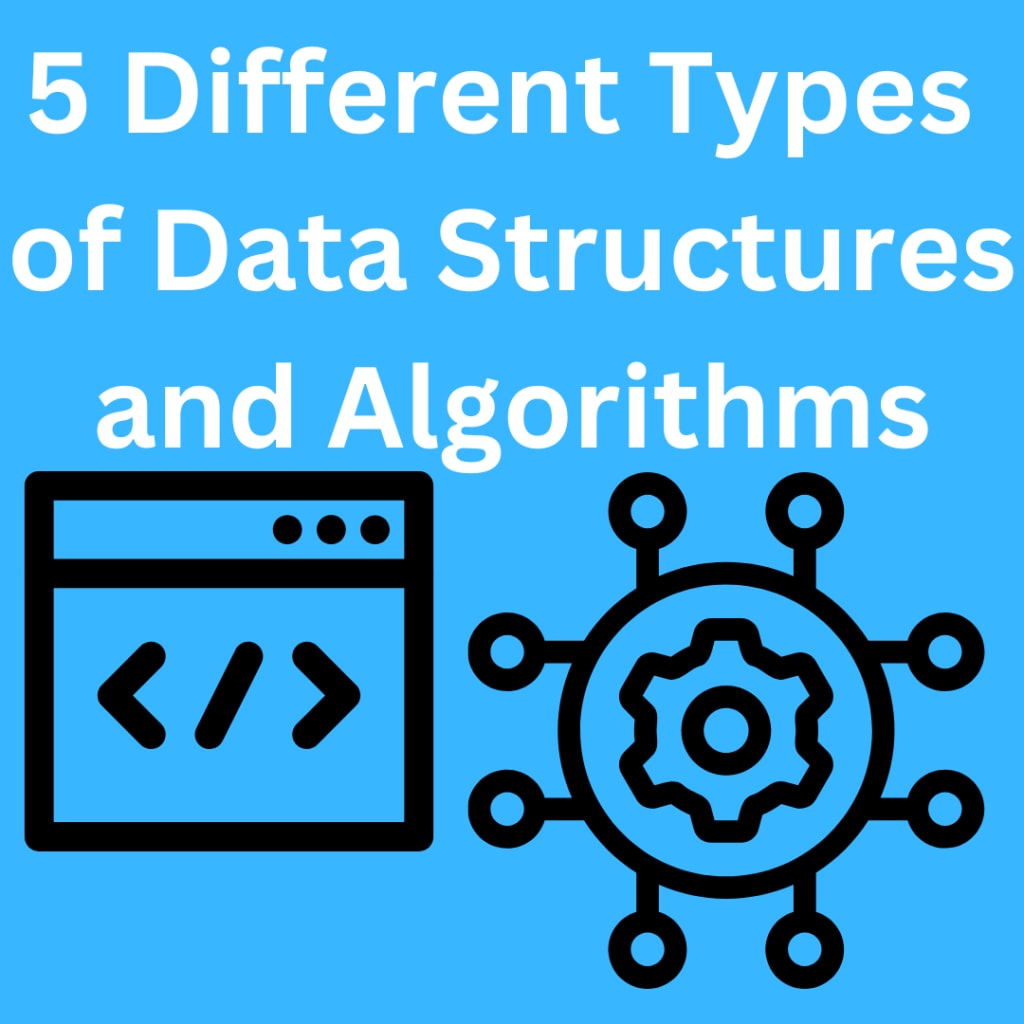5 Different Types of Data Structures and Algorithms
Data Structures and Algorithms

Data structures and algorithms are critical in every aspect of computing, from operating systems and networking to programming languages. This blog will look at five different types of computer science professionals use today.
Data Structures in Linear Form
Computer science has two kinds of data structures: linear and nonlinear. Linear data structures are the most basic, storing data on a single level. Each element directly links to the elements that come before and after it. Consider a deck of cards or a shelf of books.
Linear data structures include arrays, linked lists, stacks, and queues which you can learn more in detail with the best full stack developer course now.
Arrays
Arrays store similar data elements in contiguous memory locations, making them simple to process, sort, and search. Arrays, one of the oldest data structures in computer science, can be found in almost every computing programme.
Linked Lists
A linked list is a collection of data elements, each pointing to the next. This configuration allows users to insert or remove elements from any position in the sequence.
Stacks
A stack is a collection of data elements that operate according to the "last-in, first-out" (LIFO) principle. A new element added to a stack is stacked on top of all previous elements. Only the topmost element in the stack can be removed. Stacks are excellent for retrieving recently used objects or data in the order in which they were entered.
Queue
Queues are groups of data elements that adhere to the "first-in, first-out" (FIFO) principle. Queues, instead of stacks, add a new element at the bottom of all previously added elements. The queue's first element is always removed first.
Nonlinear Data Structures
Graph data structures and algorithms are fundamental concepts in computer science. Nonlinear data structures are graphs. They have multiple levels of data and do not connect elements in a sequential manner. As a result, graphs enable data-driven computing professionals to solve complex problems.
Graphs are made up of nodes and edges. Edges represent the relationships between data elements, while nodes store them. Graphs can depict a wide range of data relationships, from electrical circuits to individuals in a social network.
A tree is one type of graph that arranges nodes hierarchically. The root is the node at the top. There are zero or more subtrees connected to the root. A binary search tree, for example, has two subtrees connected to the root, a left subtree and a right subtree.
Because trees are hierarchical, they frequently represent data like file systems and directories.
Sorting Algorithms
Sorting algorithms are procedures for rearranging data in arrays and lists step-by-step. For instance, a user may need to sort an array in numerical or lexicographical order. Sorting algorithms allow other algorithms, such as searching algorithms, to run more efficiently.
Three fundamental sorting algorithms are insertion sort, merge sort and quicksort.
Searching Algorithms
Search algorithms locate and retrieve specific elements within data structures. Linear search and binary search are two prominent examples.
Linear Search
Linear search is a sequential searching algorithm that can be applied to sorted and unsorted data structures. It iteratively traverses lists and arrays, one element at a time.
Consider an unsorted list of elements with values ranging from "1" to "25." A linear search for "5" would go through the values in the order they are stored until it was found.
Binary Search
The binary search algorithm is an interval search algorithm. Interval searches divide elements into multiple intervals and then only traverse the expected interval. Because they divide the search space, they are more efficient than sequential searches. Binary search is useful for locating elements in a sorted list. It compares the search value to the data structure's middle element before traversing the expected interval. Consider a sorted list of elements with values ranging from "1" to "25." A binary search for "5" would match it with the middle element "13." Because "5" is less than "13," the algorithm would look for the value in the lower half of the interval.
Graph Traversal Algorithms
Computer scientists use graph traversal algorithms to search for nodes in graphs and trees. Unlike linear data structures in computer science, graphs must be searched multiple times to find and retrieve data.
Two graph traversal algorithms are breadth-first search and depth-first search. They assist computing professionals in solving the most common graph and tree problems.
Hope this blog on different types of DSA was helpful for you. If you are looking for resources to learn these skills, feel free to visit Learnbay. It offers a DSA course and system design course, in accreditation with IBM. Sign up and learn more.
About the Creator
Enjoyed the story? Support the Creator.
Subscribe for free to receive all their stories in your feed. You could also pledge your support or give them a one-off tip, letting them know you appreciate their work.





Comments
There are no comments for this story
Be the first to respond and start the conversation.